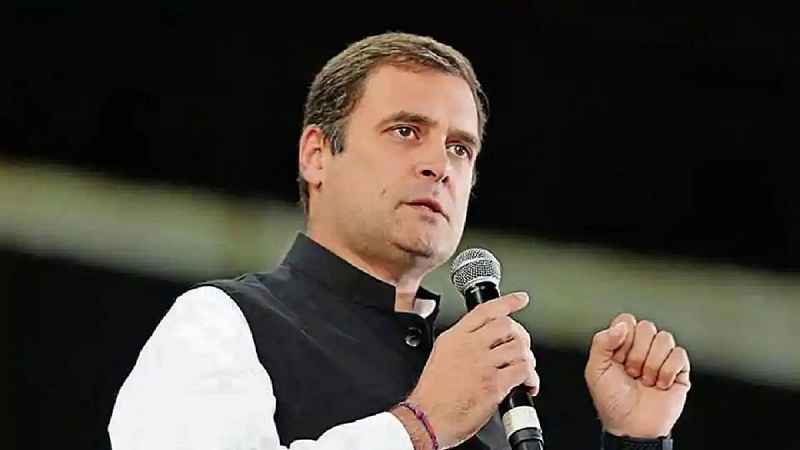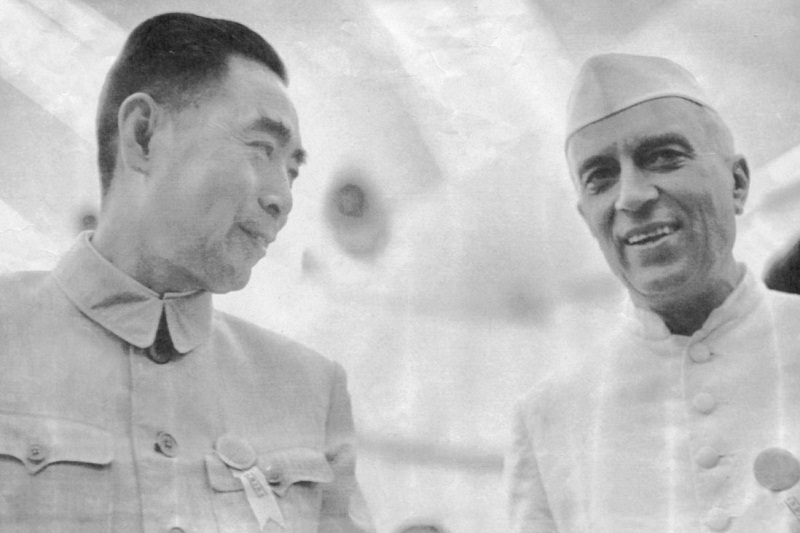Rahul Gandhi Faux Pas on Foreign Policy
Total Views |

Minister of External Affairs Jaishankar is quite right in suggesting to Rahul Gandhi to revisit the history of India-China foreign policy developments. His statement in the Lok Sabha is only causing huge embarrassment to himself and also aiding adversaries to indulge in "India Bashing" in international circles to tarnish the country's image.
The Chinese view outstanding border disputes as accidents of history. Recently, there has been a change in China's position from solving the border dispute "immediately" as opposed to "ultimately" in 1982-83, stating that it was a complicated issue and would be solved by the next generation. While the Chinese insist on the return of Tawang (the birthplace of the sixth Dalai Lama) on religious grounds, Indians seek the return of the sacred Mount Kailash-Mansarovar in Tibet.
Relations have been tense ever since a border dispute led to a full-scale war in 1962, armed skirmishes in 1967 and 1987, and a series of border clashes in the recent past. There are currently 14 areas under dispute - eight in the Western sector and six in the Eastern sector viewed as the most important disputed areas- shift from the past.
An unsettled border provides China the strategic leverage to keep India uncertain and ensure New Delhi’s “good behavior” on issues of vital concern to China. Furthermore, unless and until Beijing succeeds in totally pacifying and ‘Sinocizing’ Tibet (as Inner Mongolia has been), China does not want to give up the “bargaining chip” that an unsettled boundary visa- à-vis India provides.
China’s strategy after its disastrous 1979 invasion of Vietnam has been to win without fighting.
Briefly, the key milestones of history include Chinese officials backing off to sign the 1913 agreement on the alignment of the international boundary as per the map produced by the Foreign Department of British India after initialing the proposal citing ambiguities and technical reasons; Henry McMahon, the Foreign Secretary, bypassing the Chinese and settling British India’s Himalayan border bilaterally by negotiating directly with Tibet; and China rejecting Tibet’s claim of independent rule and maintained that the said treaty had no sanctity without China’s endorsement.
In the following decades after two world wars, India and Pakistan emerged as independent nations and so also the People’s Republic of China (PRC) after the Chinese Civil War in 1949 emerged as a nation. The new Indian Government looked at maintaining very cordial relations with China. One year later, PRC took full control of Tibet and built roads and border outposts in Aksai Chin.
The Ardagh–Johnson Line as per British India Government was considered as a formal proposed traditional boundary of the State of Jammu & Kashmir with Xinjiang and Tibet. Aksai Chin was, therefore, claimed by India to belong to Kashmir. But China refused to accept it saying it was a historic part of Xinjiang. Aksai Chin offered an important road link that connected the Chinese regions of Tibet and Xinjiang. India did protest, but it fell on deaf ears. Therefore, China’s construction of this road became one of the triggers of the 1962 conflict.
Prime Minister Nehru announced in Parliament that India regarded the McMahon line as its official border.
However, it had no effect on China and they continued to insist that they had no claims over Indian territory, but in their official map, they continued to show 1,20,000 sq km of Indian territory as theirs.
Frankly reflecting Nehru was only indulging pure rhetoric. How can he or his advisers lay claims to border areas with the top half of a 1:4 inch mile map was blank with a nearly half-inch thick line denoting the McMahon line? Almost virgin landmass.
Having served in Siang Frontier Division of erstwhile NEFA (present-day Arunachal Pradesh) between 1961-1963 as part of the pioneering battalion - 2 MADRAS - let me highlight that there were no surveyed maps showing the mountain features of the watershed of McMahon line. No roads in NEFA. Only beaten tracks are used by locals.
In 1954, Prime Minister Nehru reiterated the Indian position, claiming that historically, Aksai Chin had been part of the Indian Ladakh Region and that the border was non-negotiable. While the Chinese continued to build a road into Aksai Chin, the final jolt in the relationship came in 1959 when Nehru accommodated Dalai Lama after he fled Lhasa. Accommodating Dalai Lama by India, badly irked Mao Zedong and thereafter, a slew of border incidents started taking place which also resulted in a few deaths and injuries.
In the late 1950s, India-China relations nosedived. India started claiming Aksai Chin as a part of its territory, and China retaliated by asking for Tawang. Before this, India had never raised the issue of Aksai Chin, and China had not objected to India hoisting its flag in Tawang in 1951. In 1960, officials from India and China met to resolve the border issues; but there was no convergence of thought and standing point of view. Prime Minister Nehru then adopted a forward policy and Indian troops started to patrol and construct border outposts. Somehow, the Indian side believed that breaking out of a full-scale war wasn’t a realistic possibility. The Indian leadership perhaps failed to read Chinese internal raging anger towards India’s forward policy and perceived Indian subversion of the region of Tibet.
Since December 1981, border negotiations have been endlessly going between Joint Working Groups followed by Expert Groups and Special Representatives meetings. Yet, there has been no resolution in sight.
As per Zorawar Daulat Singh in his Book "Power Shift", China offered the "Swap Principle" but India failed to exploit the opportunity on three occasions: in 1960 when Zhou Enlai during his visit to India offered an east-west swap (Aksai Chin in lieu of Arunachal Pradesh), but India's reluctance to equate the two sectors saw this offer being rejected; in 1979, Deng Xiaoping offered the package solution to the then foreign minister Atal Bihari Vajpayee, an offer repeated several times subsequently, but Indira Gandhi rejected; and a third opening came in 2005, with the Political Parameters and Guiding Principles agreement which declared the package solution as the only way forward.
In retrospect, in December 1956 Zhou Enlai had remarked that the McMahon Line was an “accomplished fact” and both agreed that the ‘minor’ border with India should be settled soon. But in March 1959, Nehru took the fateful decision to provide asylum to Dalai Lama that dramatically transformed India-China relations. Two bloody skirmishes on the border followed. Henceforth both sides perceived each other with deep suspicion and mistrust: India for Chinese prevarication on the border; and China for India’s open interference in its domestic affairs.
Nehru himself admitted in 1959: “it is a matter of argument which part belongs to us and which part somebody else. It is not clear.” Yet, hobbled by fierce domestic opposition and his own emotional impulses, Nehru rejected a potential deal out of hand: “there can be no question of horse-trading in this matter…that you take this and we take that.”
In April 1960, Nehru’s response to Zhou Enlai’s suggestion of both sides renouncing all territorial claims is also instructive: “Our accepting things as they are would mean that basically there is no dispute and the question ends there; that we are unable to do.”

Prime Minister Jawaharlal Nehru with Zhou En Lai
This was despite Indian policymakers being aware that India’s claim to Akshai Chin was ambiguous at best.
Deng’s offer of status quo resolution in 1984 was a missed opportunity. Now, the Chinese believe that a border settlement, without major Indian territorial concessions, could potentially augment India’s relative power position, and thus impact negatively on China’s rise.
In hindsight, the inability of the Indian side to countenance the swap principle was a missed opportunity that could have eventually settled the dispute and contained the escalating conflict in the ensuing years.
At the same time, none should forget that China is beholden to Pakistan for sponsoring Henry Kissinger’s visit in the 1970s from its soil and the “Ping-Pong Diplomacy that followed contributing to China’s rise. According to one of the US declassified documents, “China has provided assistance to Pakistan's program to develop a nuclear weapon capability in the areas of fissile material production and possibly also in nuclear device design.” And, 80% of Pakistan Armed Forces are equipped with China’s combat systems and also the ongoing China Pakistan Economic Corridor leading the Gwadar Post and route to West Asia. Also, China is also at an advantage in Nepal, Sri Lanka, and has gained a strong strategic foothold in West Asia and Latin America.
For example, the China-Pakistan strategic partnership developed, consolidated and advanced after the 1962 war. For example, the list of major combat systems provided by China since 1965 includes Shenyang F-6 fighters since 1965; Shenyang FT-5 fighters since 1975; Nanchang A-5III/C since 1983; F7-PG (MIG-21) fighters since 2002; JF-17 Thunder fighters since 2007; and over 1675 Type 59 tanks delivered since 1965 with nearly 1100 Type 59/Al-Zarrar tanks in active service till date.
On account of improved connectivity, infrastructure development, and access to the Line of Actual Control (LAC), the depth, frequency, and intensity of such face-offs will increase, threatening a fragile peace that exists, with the last shot fired in anger in October 1975. Such incidents and standoffs like the one at Doklam in 2017 or Depsang and Chumar are the ever-present potential drivers of conflict between the two nuclear-armed neighbors — home to one-third of humanity.
Diplomatic relations were established in 1950, boundary issues were resolved in 1963, military assistance began in 1965, a strategic alliance was formed in 1972, and economic cooperation began in 1979. China has become Pakistan's largest supplier of arms and its third-largest trading partner.
The origin of the phrase used to describe China-Pakistan relations is traced to Pakistani prime minister, Zulfiqar Ali Bhutto, Benazir Bhutto's father) who once famously said that China-Pakistan friendship is "taller than the mountains and deeper than the oceans". Also, the term "All Weather Friendship" describes their strategic partnership.
None can deny that the geo-strategic environment has dramatically altered from 1949 to1980s to the existing environment today. In retrospect, both nations were mostly underdeveloped or developing nations with GDP almost at parity. Today, China is a "Super Power" almost on par with the USA and testing its power hegemony in the neighborhood.
Even a layman understands that India faces far more complex foreign policy challenges today than ever before from the Two-Front threat of China and Pakistan. Instead of sermonizing, fear-mongering, and finding fault with the current government, Rahul Gandhi must first relook at all the blunders committed by his great grandfather Nehru, grandmother Indira Gandhi and father Rajiv Gandhi for paving the way to its highly complex and volatile confrontation with China, that is, go back to basics of history.


